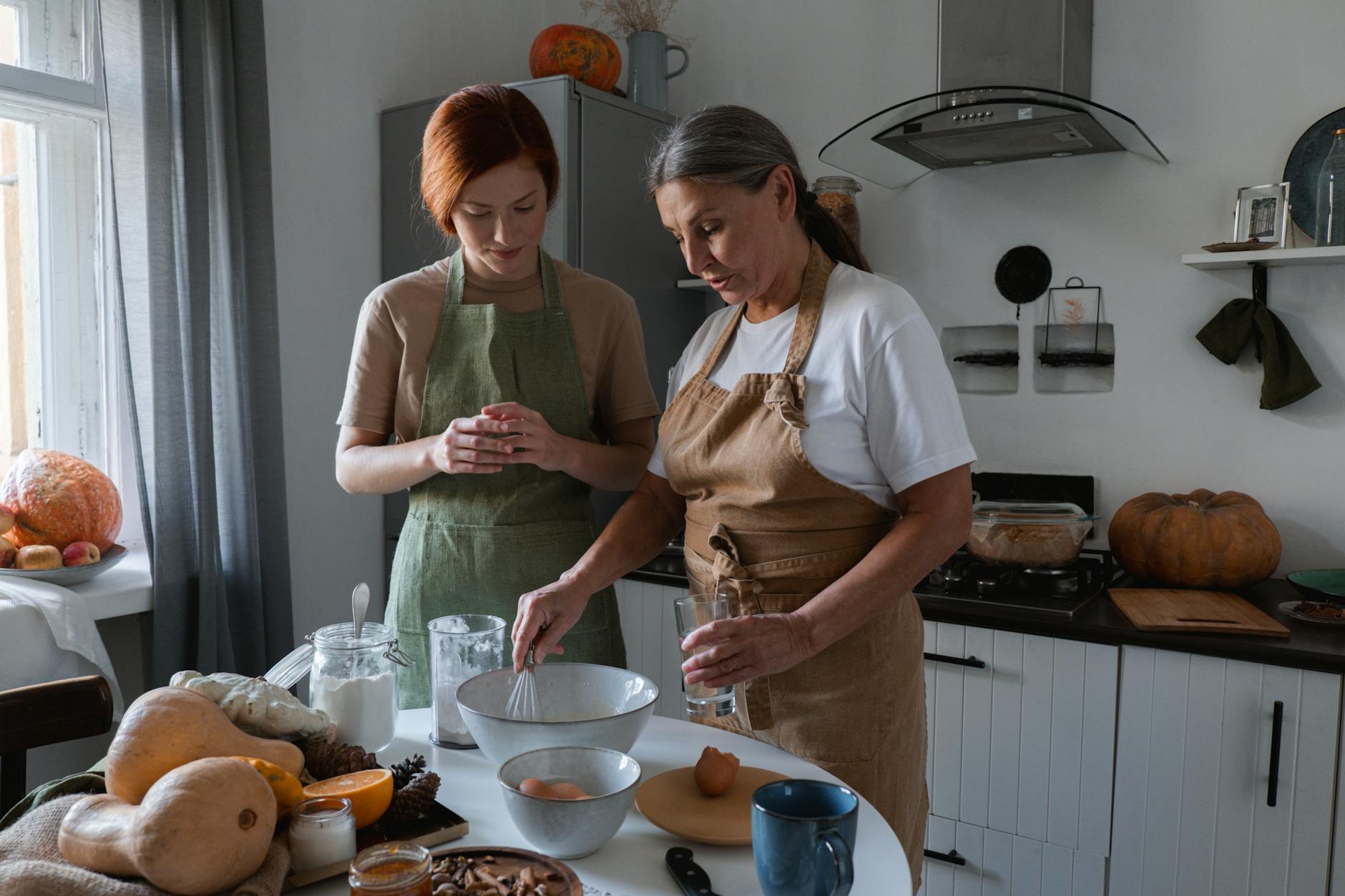Decoding Cooking Measurements
Getting a handle on cooking measurements is kind of like finding the sweet spot on a seesaw – once you’ve got it, the magic happens. Whether whipping up a pie or sauteing vegetables, knowing your tablespoons from your cups is super important. Recipes are like treasure maps, guiding you with teaspoons, ounces, and grams, and having this know-how can make or break your meal.
Common Conversions in Cooking
You’ve probably bumped into recipes using all sorts of numbers and units that make no sense at first glance. Lucky for us, cracking the code on these conversions keeps you on track to the world of tasty meals. Let’s break down some everyday measure switch-ups that you might hit on your yummy adventures:
| Measurement | Equivalent |
|---|---|
| 1 cup (c) | 240 milliliters (ml) |
| 1 cup (c) | 8 fluid ounces (fl oz) |
| 1 cup (c) | 16 tablespoons (tbsp) |
| 1 cup (c) | 48 teaspoons (tsp) |
| 1 ounce (oz) | 28.35 grams (g) |
| 1 pound (lb) | 16 ounces (oz) |
| 1 kilogram (kg) | 2.2 pounds (lb) |
| 1 liter (l) | 1 kilogram (kg) |
Getting cozy with these conversions makes life in the kitchen smoother and your dishes turn out as planned. If you’re doubling up a recipe for a party or swapping out buttermilk for yogurt, understanding these numbers is a must. Hungry for more? Dig into our article on the importance of correct quantities when cooking and level up your chef game.
Grams to Cups Conversion
Getting your head around the difference between grams and cups is a big step towards nailing those recipes. Just like people, ingredients have their quirks—the way they fit into a cup can depend on a lot of things. Let’s get into how to convert different ingredients to keep your cooking awesome.
Understanding the Differences
Converting grams to cups isn’t a one-size-fits-all kinda deal. Ingredients come with their own texture and volume, which means a cup of one thing isn’t gonna weigh the same as a cup of another. Take flour and sugar, for example. A cup of flour feels lighter than a cup of sugar thanks to their unique make-up.
If you’re aiming for spot-on recipes, especially with baking, weighing stuff in grams is the way to go. But a lot of folks stick to using cups, which can sometimes mess with your recipe’s mojo.
Converting Different Ingredients
Here’s a handy guide for turning grams into cups for some common kitchen staples:
| Ingredient | Grams (g) | Cups (give or take) |
|---|---|---|
| All-Purpose Flour | 125g | 1 cup |
| Granulated Sugar | 200g | 1 cup |
| Brown Sugar (packed) | 220g | 1 cup |
Remember, these conversions are rough estimates. How you pack an ingredient in the cup can shift the measurement a bit. Want more exact numbers? Check out our piece on how many grams in a cup?.
Grasping the little quirks of different measurements makes a big difference in your kitchen victories. Try playing around with both weight and volume until you find your groove. It’ll definitely pay off when you’re ready to show off those cooking skills!





